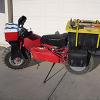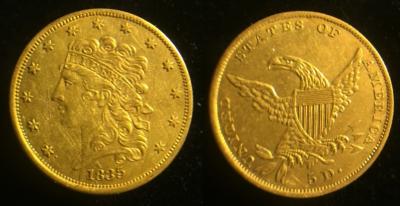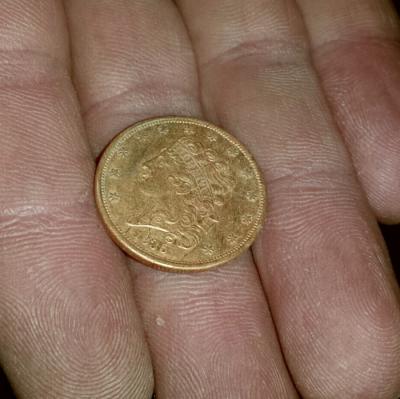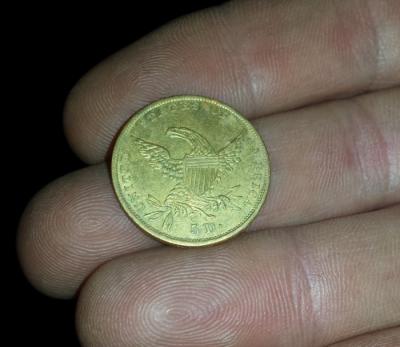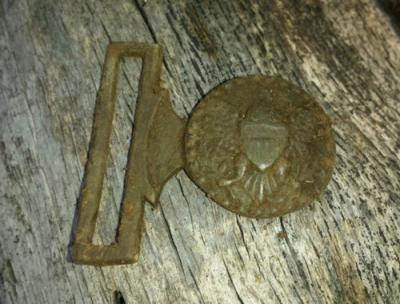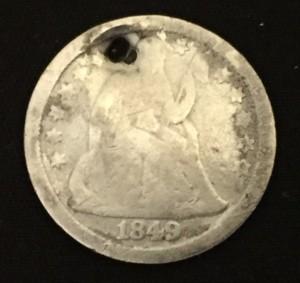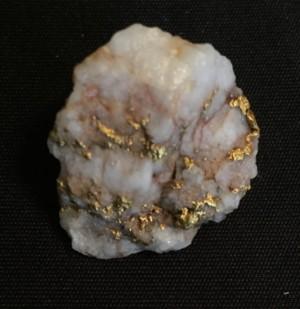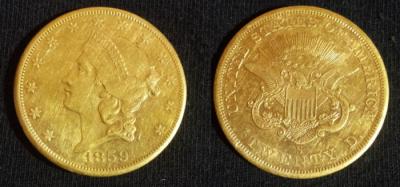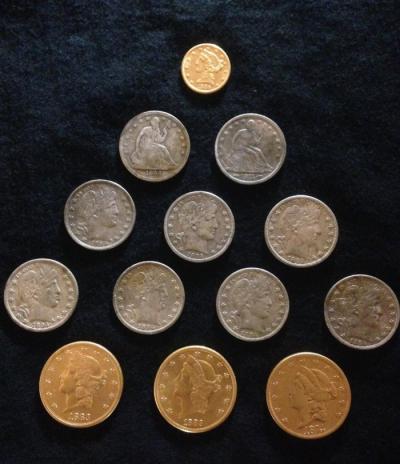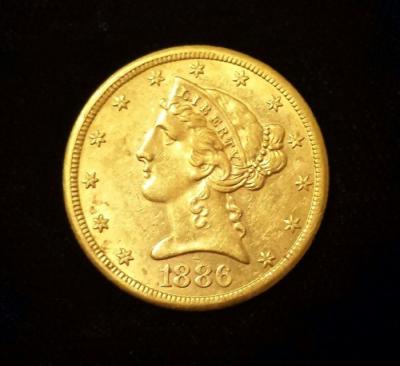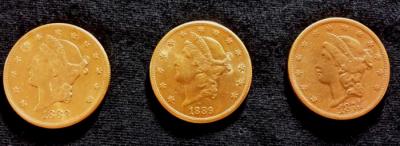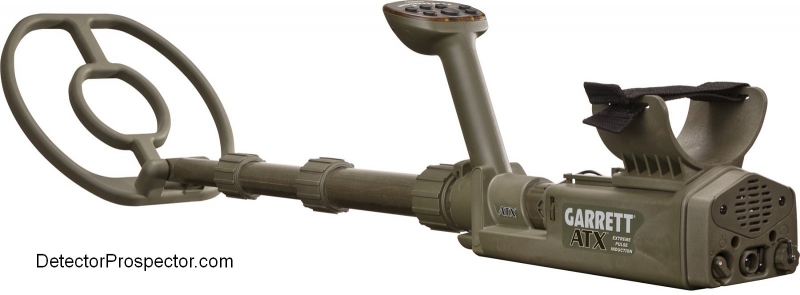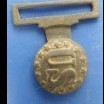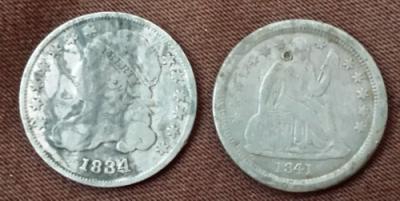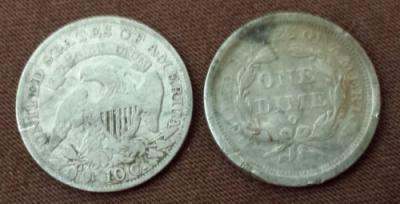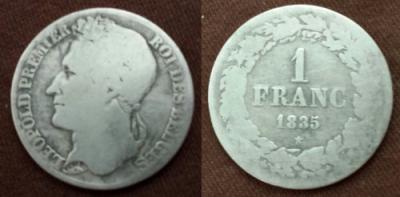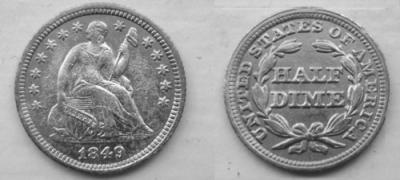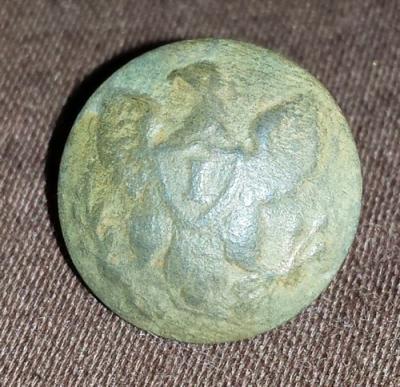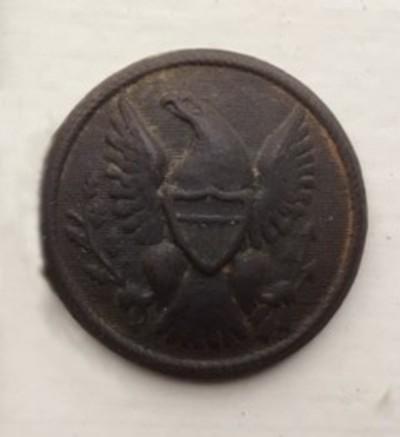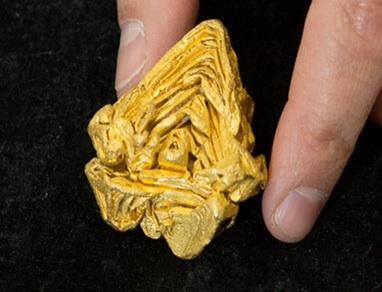Search the Community
Showing results for tags 'videos'.
-
Got out the other day for a quick run up a wash that I’ve had my eye on. My goal for the day... follow the wash all the way to the end, check for bedrock, and flag those spots for later sampling and detecting. Goal was achieved. It was another awesome day to be out! Enjoy the video... make sure to watch it in HD for the full effect.
-
This was an eye opener. Indiana gold dredge tailings piles reworked via panning contained good gold. Dennis tip was to watch for where the dredgers are running their machines with really fast water flow, then pan their tailings piles. He gets quite a few pickers. I always wondered why people still get good gold at places like Gatesville,Indiana, where the same gravel bars must get reworked 100 times a year? -Tom
-
Back to the spot Mark got his $20 Gold Coin!! CRAZY!! and a whole lot of fun. Glad I finally got over one!
-
Sometimes a video is all you need. I know this video may seem long and many of you will not want to watch a 16 minute video. But this is one you WILL want to watch. (Sorry, it is not all gold nuggets but hopefully you will forgive me) Watch in full screen for the full effect! Enjoy!! I know I sure did!!
- 19 replies
-
- coin detecting
- amazing finds
-
(and 1 more)
Tagged with:
-
I consider myself fortunate to have met Garrett's Senior Design Engineer, Brent Weaver, many years ago during prototype testing of the Garrett Infinium. I think Brent deserves a great deal of credit in making Garrett the leader it is today with a series of incredible innovative bang-for-the-buck metal detectors, first and foremost being the AT series. Brent is just a real nice guy - comes across as a regular Joe not a head in the clouds engineer. I think this video shows that. It also has an extremely interesting discussion of pulse inductions detectors, ground balancing methods, and the dreaded "hole" that occurs when ground balancing. There is explanation of why the holes occur and how some designs try to alleviate but not eliminate the problem. Good stuff, starts around the 3:40 minute mark. The audio quality in this video truly sucks. However, this is important information, and so repeated listens, typing, and listening again on my part, produced the following transcript. Again, this is from Brent Weaver, Senior Design Engineer, Garrett Metal Detectors. Transcript starting at 3:40 mark: "If you look at the various pulse detectors that exist on the market, you have your simplest pulse machines, which are single pulse machines that are non-ground balancing. Those are detectors that are typically exclusively used for the beach, for example, the Sea Hunter or something like this. The next step in advancement there is to have a ground balancing pulse machine, those can still be a single pulse detector. This pulse channel is able to ground balance, which means it can neutralize the ground. The problem with that sort of technology is when you ground balance out the ground, you can also balance out any target that has a decay characteristic that is similar to the ground. We call this the "detection hole". Essentially, it is a hole in the conductivity... when you look at the conductivity of gold or any material, you look at a conductivity spectrum. The decay rate of that... pulse decay is a function of the conductivity of the material and also the thickness and shape of the material. It all factors into effective conductivity. For a ground balancing pulse detector, again, if the conductivity of the ground is similar to the conductivity of the target, when you ground balance out the ground you also ground balance out the target. To eliminate that problem, you create a second pulse which is substantially different than the first pulse, such that when you ground balance out the ground on the second pulse, its conductivity decay as far as the target is concerned, the conductivity decay on the first pulse and that on the on the second pulse do not match each other. As a result, as you ground balance out the ground on the first pulse, you create a hole, and you ground balance out the ground on the second pulse, it also creates a hole, but it is in a different location. And so, those two pulses working together in unison, working simultaneously, one will always fill in the hole of the other, they overlap such that you never have a detection hole. If you only have a single pulse detector, and it ground balances, it will have a detection hole. There are various products on the market, some are less expensive than the ATX, some are more expensive than the ATX, but if they are a single pulse detector, they are going to have a hole in their detection, period. You are going to miss gold. You are absolutely going to miss gold. Now where that hole falls depends on the mineralization conditions, and where the ground balance is set for the detector. As the ground balance shifts, the hole shifts with it. If you have a detector that has continuous ground tracking, such that you cannot switch it off, as that ground track moves around for the various ground conditions, the hole moves around with it and the targets are disappearing into that hole. You never know where the hole is at any time. Again, to eliminate that problem, the more advanced, the most advanced detectors, like the ATX, use multiple pulse technology. They don't just have one single pulse that repeats, they have different kinds of pulses, and those pairs repeat. That is one of the differences in a true high end performance product like the ATX, versus some of the other products on the market. They are good products, and they are ground balancing pulse detectors, but if they are a single pulse technology, they have a hole in their detection that will miss targets." Now, for me listening to that it is obvious that Garrett was clearly gunning for the White's TDI. How do I know that? Because it was Minelab that originally put multi period pulse detection into the consumers hands, via their MPS (multi period sensing) technology beginning with the ground breaking SD 2000. The White's TDI on the other hand is an older design, and in fact is basically just an Eric Foster Goldscan stuck in a White's labeled box. The Goldscan and the TDI are a single channel ground balancing pulse detector with the problem that Brent outlines in the video. Bruce Candy of Minelab saw the same issue, and the SD 2000 was specifically developed as a multi channel or multi period device for this very reason. MPS was patented, and so I am not sure if it was the patent expiring, or Garrett simply using a method that got around the patent, but the ATX is using a similar multi period design as the SD Minelabs. Having used the Minelabs and the TDI, plus the ATX, I can vouch for the electronics in the ATX as being very capable, and I do believe superior to that in the TDI. My ATX in fact tested favorably compared to my GPX 5000 with the 5000 having the edge, but not as much as I expected. I think in large part that is simply due to the Minelab using a much more powerful battery, pumping far more power into the ground than the ATX with its eight AA batteries. Unfortunately, in my opinion Garrett, made a huge mistake in taking these excellent electronics, and hobbling them with a housing that did not take advantage of one of Minelabs biggest weaknesses - ergonomics. The TDI had and still has a distinct edge in that regard, and at a lower price than the ATX. Ironically, it is also that detection hole and the ability to manipulate it via a manual ground balance that has become, not the big problem as laid out in this video, but a feature of sorts in favor of the TDI. People have learned how to manipulate the hole to help identify targets by using the ground balance control as a sort of reverse discrimination control. Combined with the unique conductivity switch on the TDI knowledgeable users can become very proficient at identifying various target classes, and this has made it very popular with relic hunters in particular. What history in hindsight reveals, in my opinion, is that Garrett missed the boat with the ATX as regards Minelab. The ATX hit the market before the SDC 2300, and had a window of opportunity to really make inroads, if it had been in a lighter weight dry land package, with a light dry land coil set designed specifically for desert prospecting. The electronics are there; it is the heavy housing, and heavy knock sensitive coils, overpriced by an attached telescoping rod assembly, that really hurt the machine. On the flip side, I don't think they did too much damage to the TDI either, with the TDI being a less expensive, more ergonomically friendly unit. Like the Garrett Infinium before it, the ATX has settled into being more a beach detector than a prospecting detector. I have of course been making hay over this since day one, and continue to make an issue of it at every opportunity, in hopes that we may see a Garrett LTX some day. Dry land design only for the absolute lightest weight possible machine with light weight knock resistant coils to match, it would be a winner. There is a market still I believe for a $1500 -$2000 ground balancing PI detector that clearly has more power than a TDI in an all in one package lighter than anything Minelab currently markets. The only question in my mind is whether Garrett will finally get it right, or will it finally be a moot point, when new Fisher, White's, and Nokta/Makro machines waiting in the wings finally arrive.
-
Metal detecting and the jar of gold1 hannon from AMRA makes an exciting find. Not sure he even realizes how outstanding it is,lol. You may want to just fast forward to the last couple minutes. Ray
-
Had mine out in the pouring rain and mud the other day and the control box took a total bath for at least 2 hours strait. Despite the mud and rain she is still running perfect. I see guys buying water proof covers for the control box....I'm gonna keep running mine commando and see what happens... strick
-
And this was 70 years ago.....
-
My buddy Mark and I hit a 1850's house site a couple times and Mark was on fire!! Thanks for looking Ron Swenson Ron (CA)
-
I'm loving the performance on small gold below .3 gram of the new SDC 2300. So doing a bit of testing vs the ATX I got the ATX performing a bit closer to the SDC2300 performance on this small gold. Tested in the video is a .25 gram nugget. The dirt in the video will stick to my magnet on my digging pick. Check out the video to see what I did... Bonus video... How to use the Minelab SDC 2300 as a meat slicer:
-
- videos
- garrett atx
-
(and 1 more)
Tagged with:
-
- 29 replies
-
- videos
- minelab sdc 2300
-
(and 1 more)
Tagged with:
-
Hi folks, I did an all day hunt with my mining partner, and unearthed a couple of small pocket gold nuggets in an area I've been detecting for years and have found a 1/4 oz nugget at. As usual we did some video just in case we hit some nuggets. This is in Northern California about a mile up a creek from the Klamath River. Video is from my partners Youtube channel, "The Handergard". I also did an all day Oregon hunt with the Minelab SDC 2300 to no avail for nuggets, but did enjoy hunting with it. Oregon gold nuggets seems a bit more hard to find than California nuggets... Beautiful scenery in this video also...
-
Ron Swenson (Ron(CA) on some forums) and friends are coin and relic hunters in California. Ron uses a Minelab CTX 3030 and while hunting an old cabin site recently made an amazing find - a 2.5 ounce gold nugget! Many of us who search for gold do not make finds like this and these guys have made several accidentally while coin and relic hunting. It raises the question of how many nuggets are hiding around old campsites and old cabin sites, overlooked because the trash keeps regular nugget hunters away. It shows the need for a good discriminating VLF and also the need to get patient and hunt the trash from time to time. The CTX 3030 is more known for its coin, jewelry, and relic hunting capability but can of course also find gold nuggets. I would rate its ground handling capability as being merely adequate but its trash handling capability as top notch. Machines more the norm in the nugget hunting world up to the task are any of the multi use models, Garrett AT Gold, Fisher Gold Bug Pro or F75, Minelab X-Terra 705 (or CTX!), Tesoro Lobo, or White's MXT variants. Ron does also look for gold and when doing so uses a Gold Bug Pro or GPX 5000. Enjoy the video. You rarely get to see a nugget like this uncovered. Dude!
-
Well, here it is folks!
-
LOS ALAMOS, N.M., April 7, 2014—When geologist John Rakovan needed better tools to investigate whether a dazzling 217.78-gram piece of gold was in fact the world’s largest single-crystal specimen—a distinguishing factor that would not only drastically increase its market value but also provide a unique research opportunity—he traveled to Los Alamos National Laboratory’s Lujan Neutron Scattering Center to peer deep inside the mineral using neutron diffractometry. Neutrons, different from other probes such as X-rays and electrons, are able to penetrate many centimeters deep into most materials. More at http://www.lanl.gov/newsroom/news-releases/2014/April/04.07-single-crystal-of-gold-verified.php
-

What the World Finds Gold With
Rick K - First Member posted a topic in Nokta / Makro Metal Detectors
The competition for the scarce dollars of artisanal gold miners in the 3rd World is heating up. Nokta is a turkish (I said Russian before) company. All those clever engineers who don't have either US tech industry or US Defense industry are busy designing metal detectors. Notice the form factor - remind you of a certain PI detector. It's a VLF, of course. -
Here is a nice little interview of electronic prospector Jonathan Porter of Australia. It was my good fortune to have JP as my host for over a month in Australia looking for gold in the Australian outback. I could not have asked for a better guide and host. JP is not only a superb prospector but a true gentleman. Check it out at http://www.abc.net.au/local/videos/2014/03/10/3960406.htm

